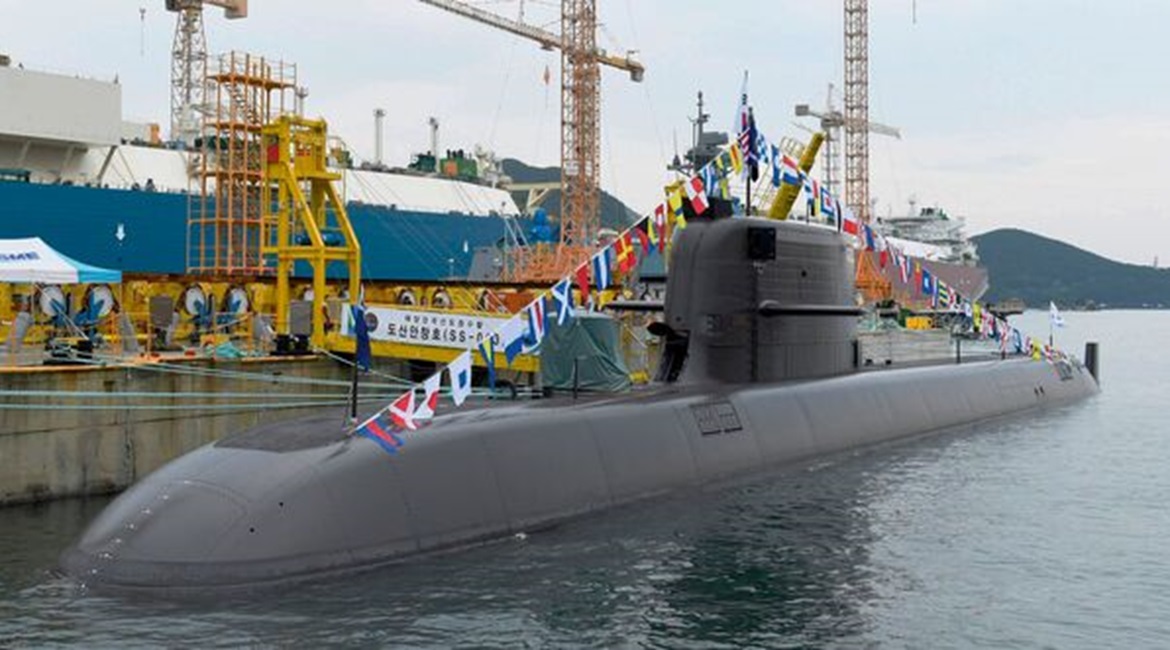
South Korea has for the first time conducted underwater ejection tests of a locally developed submarine-launched ballistic missile (SLBM) from an in-service submarine, according to local media reports.
The Yonhap News Agency reported on 7 September that the SLBM tests, which were carried out the previous week by the Agency for Defense Development (ADD) from KSS-III-class submarine Dosan An Chang-ho (pennant number SS 083), follow similar tests conducted in recent months from an underwater barge.
The media outlet quoted unnamed military sources as saying that series-production of the SLBM, which has reportedly been codenamed ‘Hyeonmu 4-4' (also spelled ‘Hyunmoo 4-4'), will begin once a series of additional tests has been completed.
Yonhap also reported that the SLBM is believed to be a variant of South Korea's 500 km-range Hyeonmu-2B (also spelled Hyunmoo-2B) ballistic missile.

Dosan An Chang-ho , the RoKN's first KSS-III-class SSK, during its commissioning ceremony on 13 August at DSME's Okpo shipyard on Geoje Island. Yonhap reported on 7 September that the submarine recently conducted its first SLBM underwater ejection tests. (RoKN)
The Ministry of National Defense (MND) in Seoul declined to comment on the media report.
The Republic of Korea Navy (RoKN) commissioned Dosan An Chang-ho, its first locally developed, diesel-electric attack submarine capable of deploying SLBMs, during a ceremony held on 13 August at the facilities of Daewoo Shipbuilding and Marine Engineering (DSME) at Okpo on Geoje Island.
The boat, which is the RoKN's first of a planned fleet of nine KSS-III-class submarines, is expected to be operationally deployed from August 2022 after undergoing a series of operational performance and capability evaluations.
Equipped with locally made lead-acid batteries and an air-independent propulsion (AIP) system featuring hydrogen fuel cells, Dosan An Chang-ho
Looking to read the full article?
Gain unlimited access to Janes news and more...




